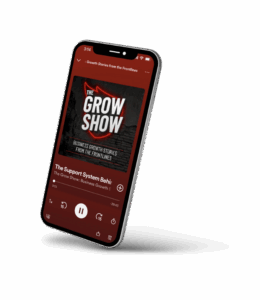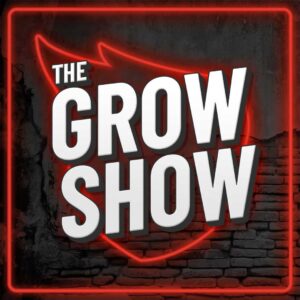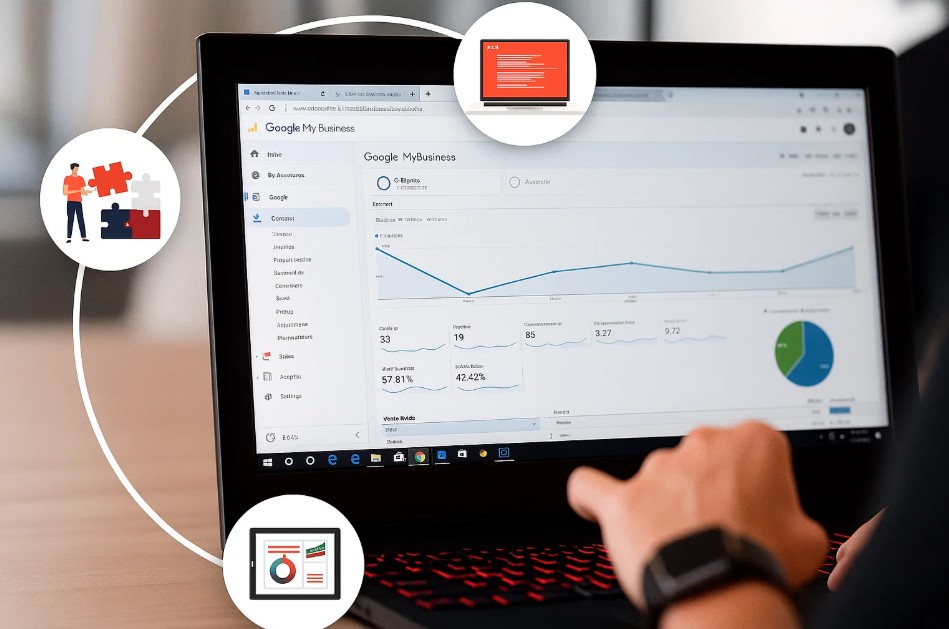In the fast-paced world of sales development, effective management of Sales Development Representatives (SDRs) is crucial for achieving consistent results. With nearly 83% of SDRs failing to meet monthly quotas due to poor time management and lack of focused direction, leaders must find ways to enhance productivity, motivation, and long-term success.
Great leadership, however, isn’t just about hitting numbers—it’s about helping people reach their full potential. Accountability and measurement aren’t tools for pressure; they’re tools for growth. When done right, they create an environment where people can thrive. That’s where a framework like the A-Player Score comes in. It gives leaders a clear, positive structure for holding SDRs accountable, helping each team member understand exactly what success looks like and how to achieve it.
At the same time, leadership can’t happen from behind a screen. Too often, managers get buried in emails, reports, and administrative tasks, disconnected from the heartbeat of their team. The best way to truly manage an SDR team effectively is to spend time in the business—listening, learning, and engaging directly with your people. Stepping into the day-to-day alongside the team provides invaluable perspective and helps identify real challenges, not just surface-level symptoms.
When leadership teams sit in on calls, listen to customer conversations, or join onboarding sessions, they rediscover the realities of their business. That kind of involvement builds credibility and strengthens relationships while revealing insights no spreadsheet ever could.
Contents
Understanding the Role of SDRs
SDRs are the frontline of the sales process—the first point of contact between your brand and potential customers. They initiate outreach, qualify leads, and create the foundation for successful sales conversations. To manage an SDR team effectively, leaders need to deeply understand their world: the pace, the pressure, and the importance of that first impression.

Spending time side-by-side with SDRs—listening to calls or joining prospecting sessions—can expose opportunities to simplify processes, improve messaging, or strengthen coaching. That firsthand perspective ensures leaders aren’t managing from assumption but from true understanding.
The Importance of Initial Contact
The first conversation an SDR has with a prospect often determines whether the relationship moves forward. That initial contact sets the tone for the entire sales process. As experts have noted, “Sales development is fundamentally different than the rest of the sales cycle. When you connect, you have just a few seconds to generate interest and a couple of minutes to handle objections and close for a meeting.”
This is why coaching SDRs on their tone, timing, and conversational agility is critical. Great leaders don’t just instruct from a distance—they observe real calls, provide constructive feedback, and celebrate progress when those first impressions start converting into meetings.
Qualifying Leads Effectively
Once the connection is made, SDRs must determine whether a lead is worth pursuing. As of 2019, only 27% of sales development teams used the BANT framework (Budget, Authority, Need, Timing) to define Sales Qualified Leads (SQLs). Today, many use more flexible models like ANUM (Authority, Need, Urgency, Money) to better align with dynamic buying behaviors.
By guiding SDRs through consistent qualification frameworks, leaders can help them focus on quality over quantity. Reviewing lead outcomes together as part of coaching sessions ensures SDRs understand not just how many leads to generate, but which ones will convert.
Implementing Effective Coaching Strategies
Coaching is one of the most important elements when learning how to manage an SDR team. Companies that prioritize regular, structured coaching see a 28% higher win rate than those that don’t. But it’s not just about how often you coach—it’s about how you coach.
Accountability works best when it’s collaborative. Great leaders treat coaching as a partnership, not a critique. A productive coaching conversation might sound like, “You’re doing great work, and we believe you’re capable of even more. Let’s define what that next level looks like together.”
The A-Player Score makes those conversations even more impactful. By tracking clear, daily metrics—like calls made, meetings held, and CRM updates—leaders can have data-backed discussions that inspire growth. Instead of general feedback, SDRs get clarity on where they’re excelling and where they can improve.
Occasionally stepping into the workflow—joining calls, shadowing outreach, or running a meeting—adds credibility and connection. It communicates investment and shared accountability: “We’re in this together, and your success matters.”
Setting Clear Expectations
Clear expectations create focus and reduce frustration. To effectively manage an SDR team, leaders must define specific, measurable goals that align with both company and individual success. According to recent studies, companies with structured accountability systems achieve 21% higher goal attainment.
The A-Player approach makes this easy by breaking large goals into small, trackable daily actions. For instance, if an SDR consistently completes 80% or more of their daily activities, those incremental wins can be celebrated in real time. This constant visibility transforms accountability from pressure into motivation.
Leveraging Data and Analytics
In today’s data-driven environment, analytics are essential for managing an SDR team effectively. High-performing sales teams are 3.5 times more likely to use data to guide strategy, and for good reason—it reveals what’s working and what’s not.
However, numbers alone can’t tell the whole story. Data shows what is happening, but only firsthand engagement reveals why. By spending time in the workflow—listening to calls, reviewing recordings, or troubleshooting objections—leaders bridge the gap between analytics and human behavior.
When paired with the A-Player Score, data becomes actionable. Instead of isolated metrics, it tells a story: who’s improving, who needs support, and where the next opportunity lies. This creates a clear picture of progress for both individuals and the team as a whole.
Utilizing CRM Tools
A strong CRM platform is the backbone of any SDR management strategy. It keeps the pipeline organized, reps accountable, and performance transparent. Features like lead routing, activity tracking, and analytics dashboards help leaders understand team performance at a glance.
When integrated with an A-Player-style performance tracker, the CRM becomes even more powerful. It turns daily activity into measurable outcomes, showing not just who’s hitting goals but how they’re doing it. This makes coaching conversations and performance reviews more meaningful and objective.
Analyzing Performance Metrics
Regularly reviewing key metrics—such as call volume, meeting conversions, and lead quality—helps leaders identify gaps and opportunities. Analyzing this data over time allows for more effective coaching and strategic adjustments.
The goal isn’t just to monitor performance but to use insights to empower SDRs. When data is shared transparently and used constructively, it builds trust and drives continuous improvement across the team.
Fostering a Positive Team Culture
A strong culture is the glue that holds an SDR team together. With the average SDR tenure just over a year, retention depends heavily on engagement, recognition, and leadership presence.

The fastest way to strengthen culture is simple—be present. When leaders participate in calls, celebrate wins in real time, or simply show up for team huddles, it reinforces connection and trust. This isn’t micromanagement—it’s meaningful engagement that shows commitment to the team’s growth.
Accountability and recognition should go hand in hand. SDRs perform best when they’re held to high standards and celebrated when they meet or exceed them. Global brands like Amazon and Google exemplify this balance, combining ambitious expectations with a culture of recognition. Your SDR team deserves the same.
Encouraging collaboration through team-building, shared goals, and peer coaching can also create a supportive environment where everyone feels motivated to succeed together.
Recognizing and celebrating achievements—both big and small—keeps morale high. Publicly acknowledging top performers or “A-Player Days” reinforces that effort is noticed and rewarded, inspiring others to aim higher.
Conclusion
Managing an SDR team effectively requires more than setting quotas and reviewing dashboards—it’s about presence, purpose, and people. When leaders understand their team’s challenges, set clear expectations, and build accountability systems that empower rather than intimidate, performance naturally follows.
True leadership happens when you get close to the work. By stepping out from behind the spreadsheets, listening to your team, and re-engaging in the process firsthand, you uncover insights that no metric can provide. Combine that connection with structured tools like the A-Player Score and a culture built on accountability, and you’ll create a high-performing, motivated SDR team that’s built to last.
The most successful teams aren’t just managed—they’re led with intention. They have leaders who set clear standards, track progress transparently, and celebrate growth relentlessly. That’s the power of combining accountability, engagement, and performance tracking: you’re not just building better SDRs—you’re building future leaders.
Take Your SDR Team to the Next Level with Abstrakt Marketing Group
Ready to transform your SDR team’s performance and exceed your sales goals? Our team can help you implement proven strategies to manage your SDR team more effectively—driving results through structure, accountability, and genuine leadership engagement. Don’t let inefficiency or lack of clarity hold you back. Discover how to empower your SDRs, strengthen culture, and achieve lasting growth.

Madison Hendrix
Madison has worked in SEO and content writing at Abstrakt for over 5 years and has become a certified lead generation expert through her hours upon hours of research to identify the best possible strategies for companies to grow within our niche industry target audiences. An early adopter of AIO (A.I. Optimization) with many organic search accolades - she brings a unique level of expertise to Abstrakt providing helpful info to all of our core audiences.
- Madison Hendrix#molongui-disabled-link
- Madison Hendrix#molongui-disabled-link
- Madison Hendrix#molongui-disabled-link
- Madison Hendrix#molongui-disabled-link







